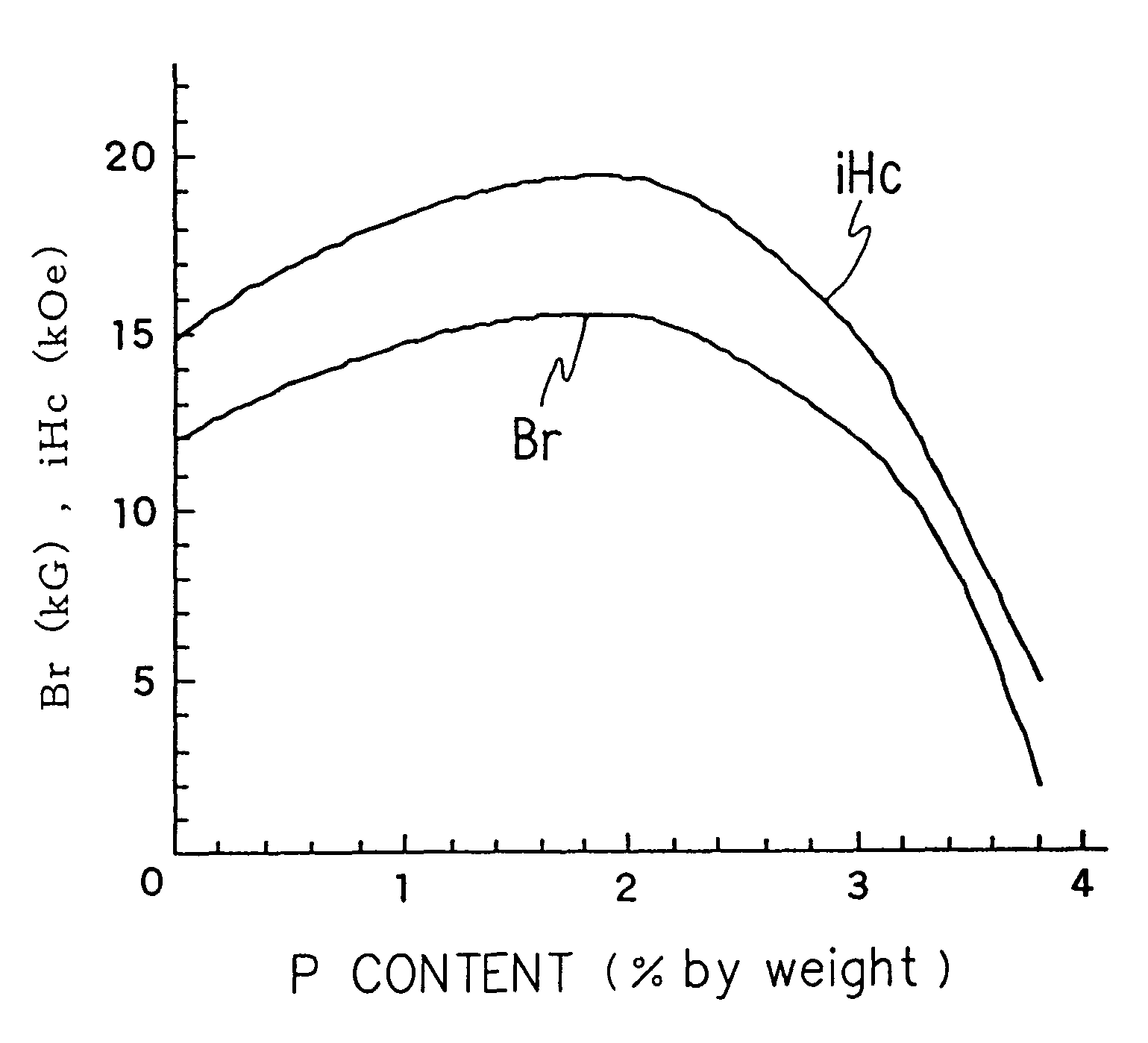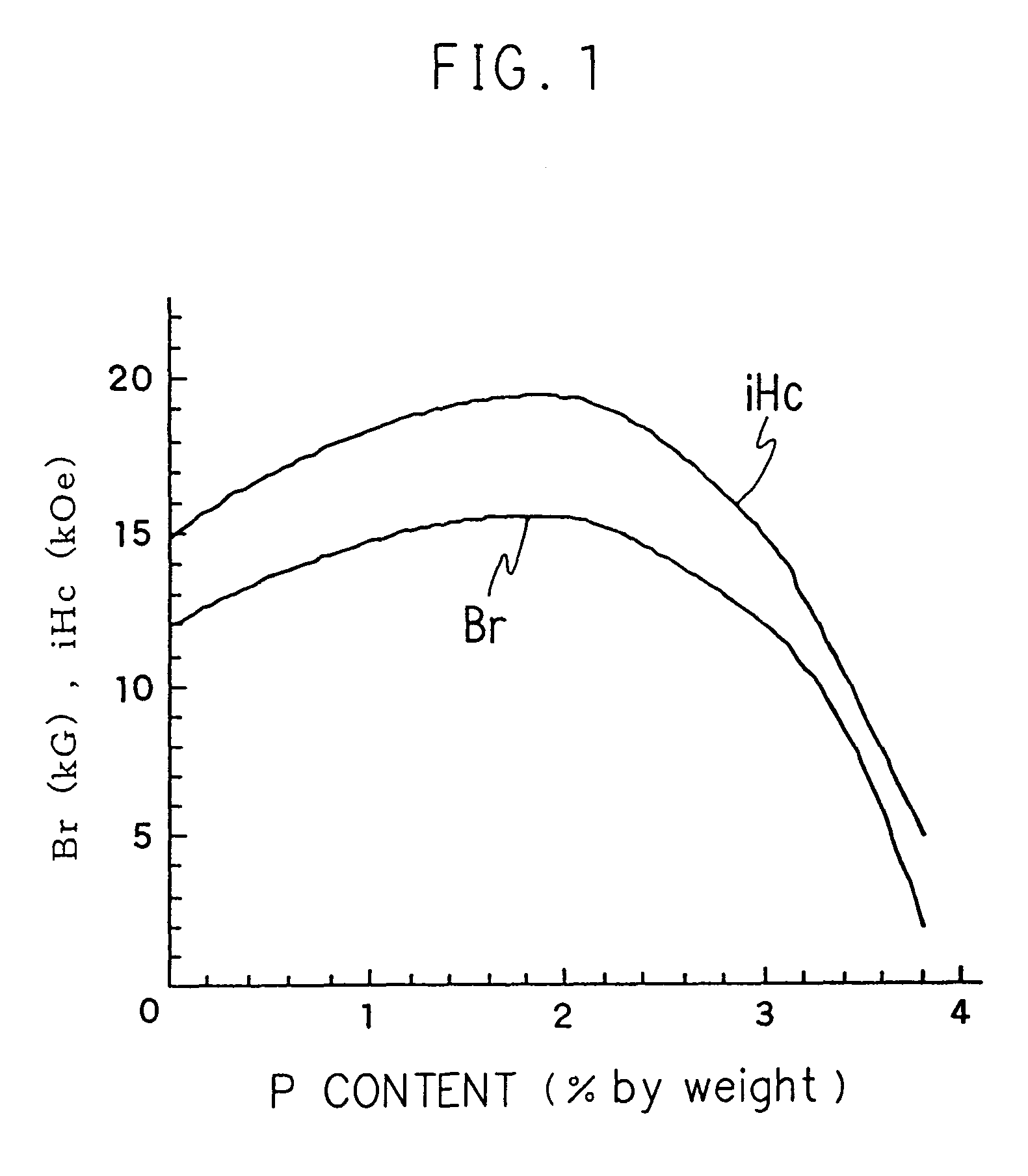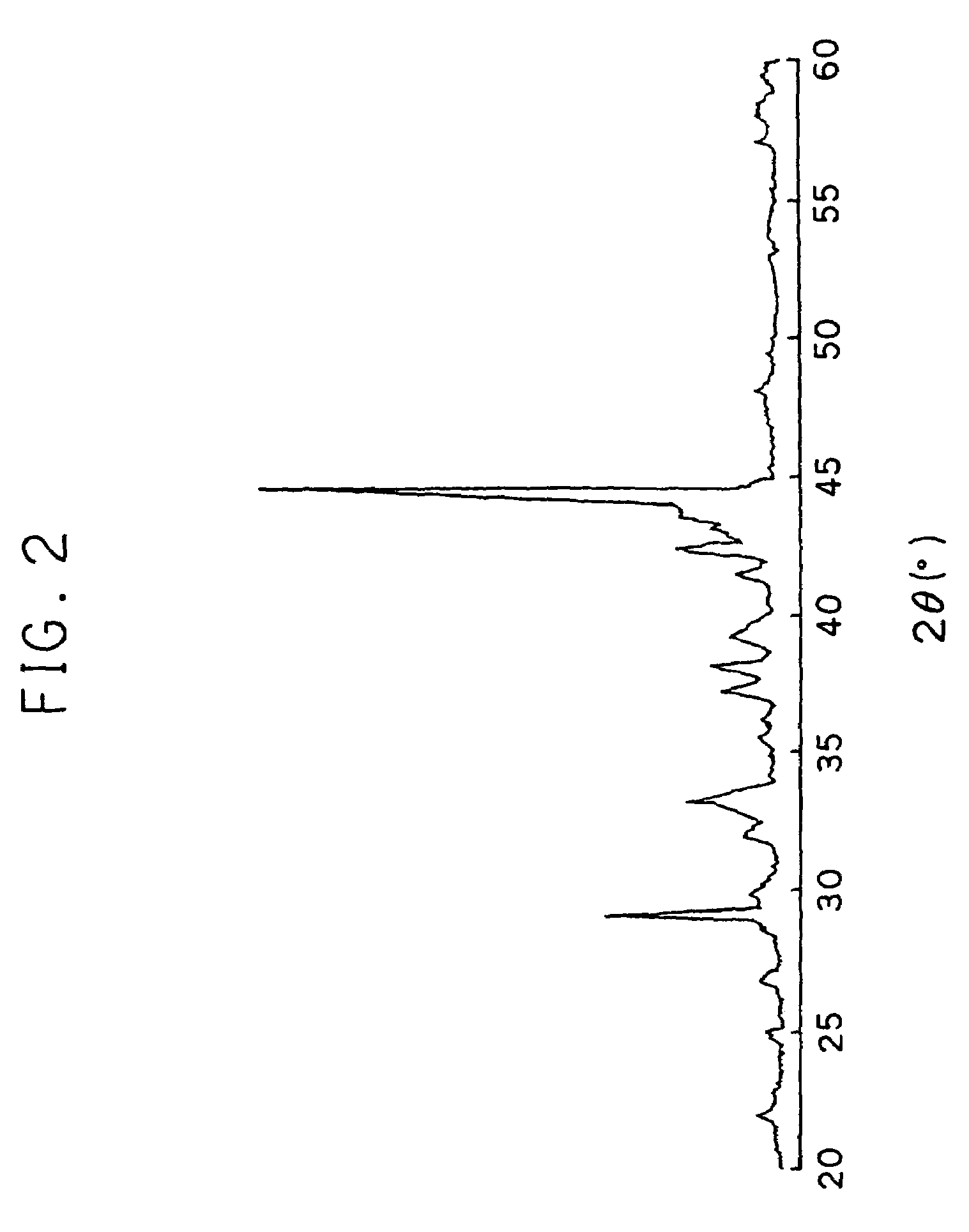Rare earth element permanent magnet material
a permanent magnet material and rare earth technology, applied in the field of rare earth permanent magnet materials, can solve the problems of difficult to achieve the improvement of magnetic characteristics
- Summary
- Abstract
- Description
- Claims
- Application Information
AI Technical Summary
Benefits of technology
Problems solved by technology
Method used
Image
Examples
example 4
[0038]Nd, Dy, electrolytic iron, Co, ferroboron, iron phosphide and Cu are utilized as starting materials. Then, these materials are mixed into a composition of 30Nd-1Dy-62.8Fe-3Co-1B-0.2Cu-2P according to weight percent (% by weight) in accordance with the same method as in Example 1 and, thereby, a material for a rare earth permanent magnet is prepared.
[0039]The Curie temperature (Tc), the magnetic coercive force (iHc) and the residual magnetic flux density (Br) in this material for a rare earth permanent magnet are measured and the Curie temperature is 450° C., the magnetic coercive force is 16.2 kG and the residual magnetic flux density is 20.3 kOe and, therefore, a great increase in the magnetic characteristics is achieved.
[0040]In addition, it is confirmed that the diffraction graph shows the main phase having a Nd2Fe14B-type tetragonal crystal structure as a result of X-ray diffraction carried out on the crystal structure of the obtained sample using a CuK α-ray.
PUM
| Property | Measurement | Unit |
|---|---|---|
| Tc | aaaaa | aaaaa |
| Tc | aaaaa | aaaaa |
| diameter | aaaaa | aaaaa |
Abstract
Description
Claims
Application Information
 Login to View More
Login to View More - R&D
- Intellectual Property
- Life Sciences
- Materials
- Tech Scout
- Unparalleled Data Quality
- Higher Quality Content
- 60% Fewer Hallucinations
Browse by: Latest US Patents, China's latest patents, Technical Efficacy Thesaurus, Application Domain, Technology Topic, Popular Technical Reports.
© 2025 PatSnap. All rights reserved.Legal|Privacy policy|Modern Slavery Act Transparency Statement|Sitemap|About US| Contact US: help@patsnap.com



